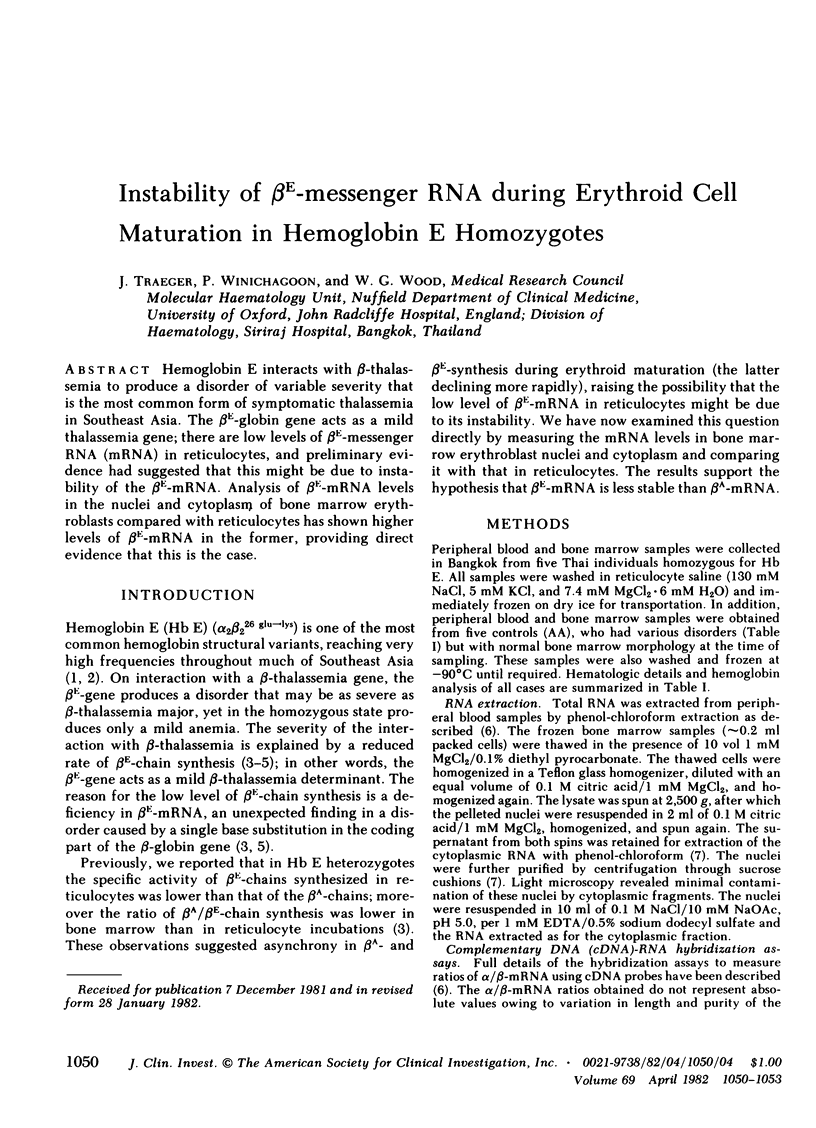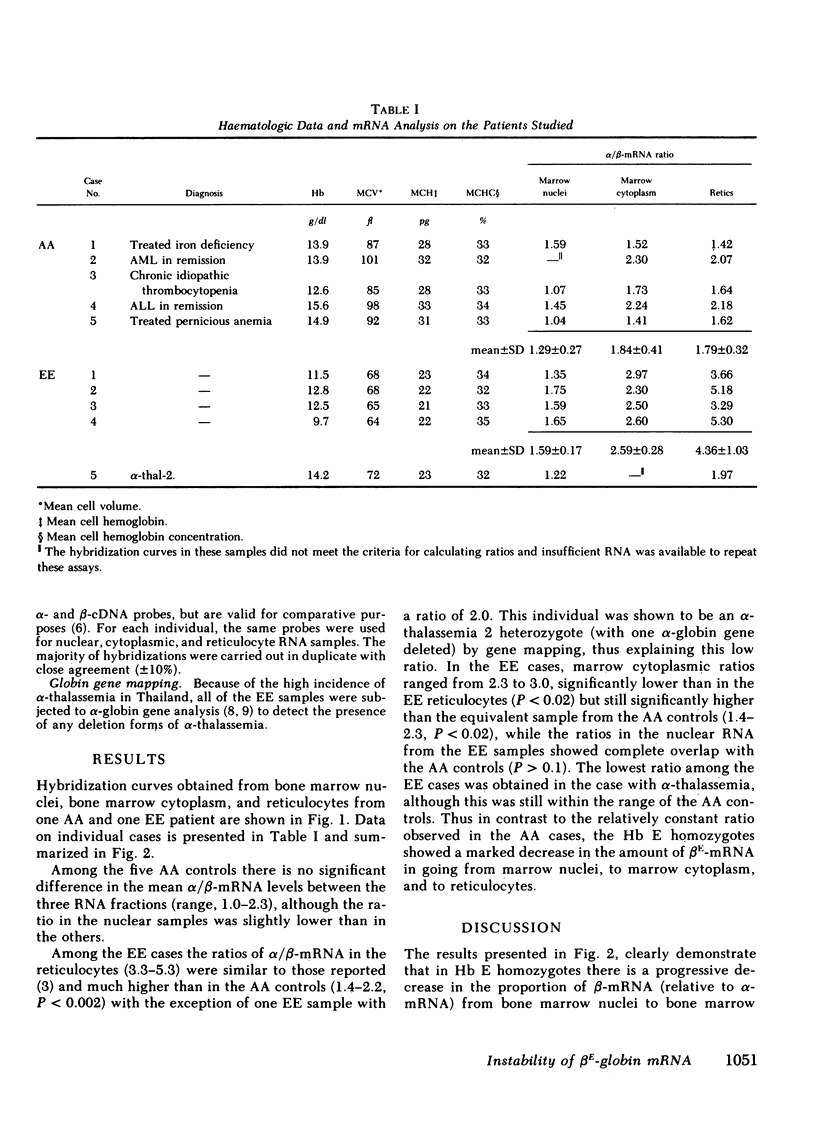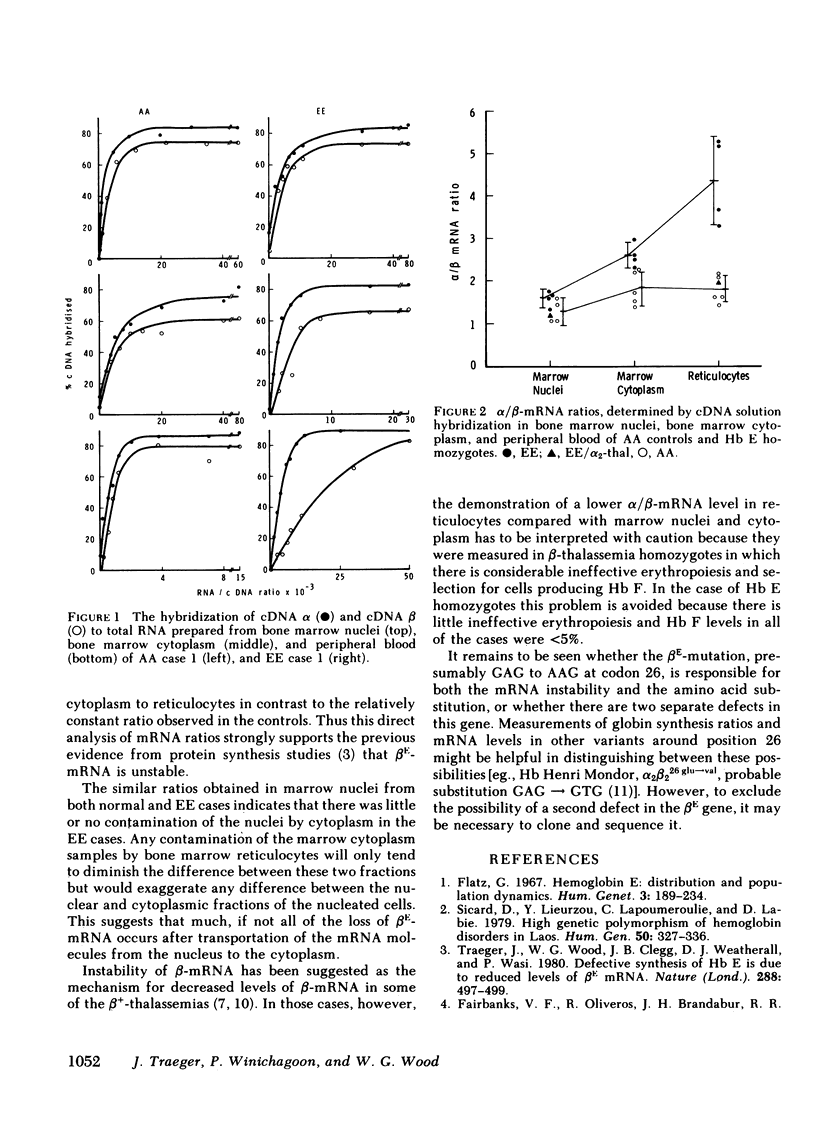Abstract
Hemoglobin E interacts with beta-thalassemia to produce a disorder of variable severity that is the most common form of symptomatic thalassemia in Southeast Asia. The beta E-globin gene acts as a mild thalassemia gene; there are low levels of beta E-messenger RNA (mRNA) in reticulocytes, and preliminary evidence had suggested that this might be due to instability of the beta E-mRNA. Analysis of beta E-mRNA levels in the nuclei and cytoplasm of bone marrow erythroblasts compared with reticulocytes has shown higher levels of beta E-mRNA in the former, providing direct evidence that this is the case.
Full text
PDF



Selected References
These references are in PubMed. This may not be the complete list of references from this article.
- Benz E. J., Glass J., Tsistrakis G. A., Hillman D. G., Cavallesco C., Coupal E., Forget B. G., Turner P. A., Kantor J. A., Nienhuis A. W. Heterogeneity of messenger RNA defects in the thalassemia syndromes. Ann N Y Acad Sci. 1980;344:101–112. doi: 10.1111/j.1749-6632.1980.tb33653.x. [DOI] [PubMed] [Google Scholar]
- Benz E. J., Jr, Berman B. W., Tonkonow B. L., Coupal E., Coates T., Boxer L. A., Altman A., Adams J. G., 3rd Molecular analysis of the beta-thalassemia phenotype associated with inheritance of hemoglobin E (alpha 2 beta2(26)Glu leads to Lys). J Clin Invest. 1981 Jul;68(1):118–126. doi: 10.1172/JCI110226. [DOI] [PMC free article] [PubMed] [Google Scholar]
- Blouquit Y., Arous N., Machado P. E., Garel M. C. Hb Henri Mondor: beta26 (B8) Glu leads to Val: a variant with a substitution localized at the same position as that of HbE beta26 Glu leads to Lys. FEBS Lett. 1976 Dec 15;72(1):5–7. doi: 10.1016/0014-5793(76)80800-9. [DOI] [PubMed] [Google Scholar]
- Fairbanks V. F., Oliveros R., Brandabur J. H., Willis R. R., Fiester R. F. Homozygous hemoglobin E mimics beta-thalassemia minor without anemia or hemolysis: hematologic, functional, and biosynthetic studies of first North American cases. Am J Hematol. 1980;8(1):109–121. doi: 10.1002/ajh.2830080112. [DOI] [PubMed] [Google Scholar]
- Higgs D. R., Pressley L., Old J. M., Hunt D. M., Clegg J. B., Weatherall D. J., Serjeant G. R. Negro alpha-thalassaemia is caused by deletion of a single alpha-globin gene. Lancet. 1979 Aug 11;2(8137):272–276. doi: 10.1016/s0140-6736(79)90290-3. [DOI] [PubMed] [Google Scholar]
- Hunt D. M., Higgs D. R., Clegg J. B., Weatherball D. J., Marsh G. W. Determination of alpha thalassaemia phenotypes by messenger RNA analysis. Br J Haematol. 1980 May;45(1):53–64. doi: 10.1111/j.1365-2141.1980.tb03810.x. [DOI] [PubMed] [Google Scholar]
- Nienhuis A. W., Turner P., Benz E. J., Jr Relative stability of alpha- and beta-globin messenger RNAs in homozygous beta+ thalassemia. Proc Natl Acad Sci U S A. 1977 Sep;74(9):3960–3964. doi: 10.1073/pnas.74.9.3960. [DOI] [PMC free article] [PubMed] [Google Scholar]
- Pressley L., Higgs D. R., Clegg J. B., Weatherall D. J. Gene deletions in alpha thalassemia prove that the 5' zeta locus is functional. Proc Natl Acad Sci U S A. 1980 Jun;77(6):3586–3589. doi: 10.1073/pnas.77.6.3586. [DOI] [PMC free article] [PubMed] [Google Scholar]


